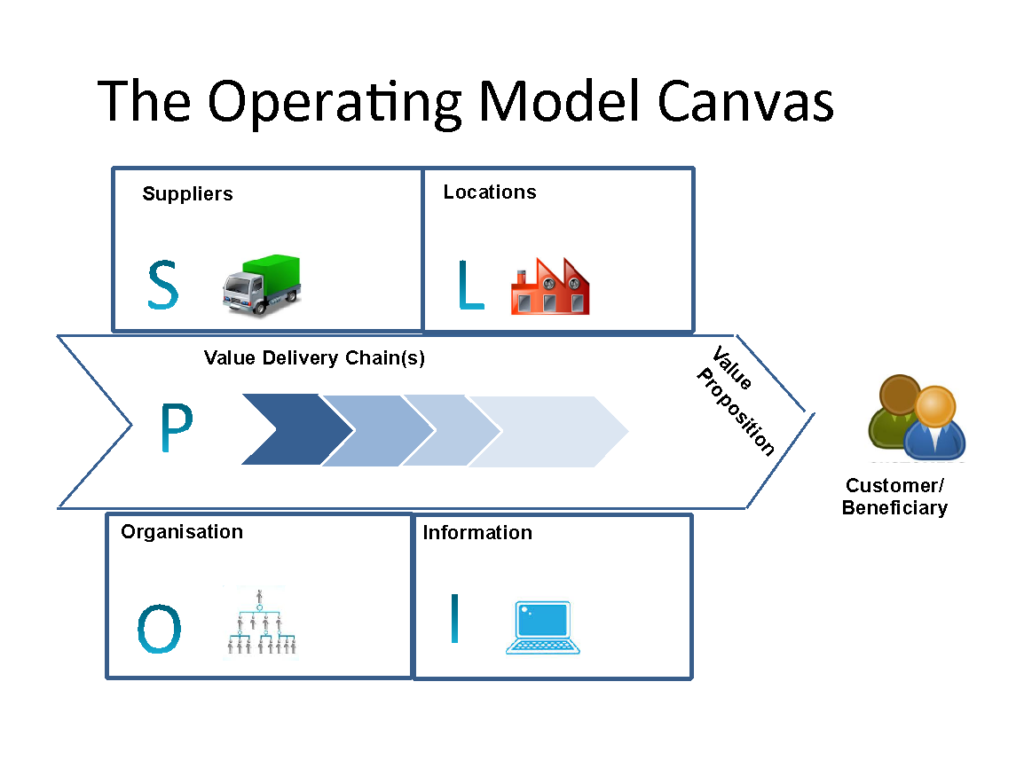The Enhanced Business Model Canvas
By Andrew Campbell, Director Ashridge Strategic Management Centre
The business model canvas has become probably the most widely used business framework in the world. If you search on Twitter you will find about five tweets a day with photographs from workshops where enthusiastic managers and students and entrepreneurs are working with the business model canvas.

Alex Osterwalder recently posted a tweet showing that the business model canvas is now as popular as blue ocean strategy, lean startup and disruptive innovation added together and is still rising in popularity while the others are flat or falling.
The reason why the business model canvas is so popular is because of its ability to simplify a complex problem – “what makes a successful business.” There are only nine elements, and the canvas makes it easy to see the connections between them. Not surprisingly Business Model Generation, Alex Osterwalder and Yves Pigneur’s book that launched the business model canvas, has sold over one million copies.
Given its popularity, you need to be brave or foolhardy to suggest that it can be improved. But let me try.
The weak point of the business model canvas is the left-hand side – Key Partners, Key Activities, Key Resources. Why? For two reasons. First, this is not how managers think about their organizations. You will never hear a businessman or leader of a charity say my organization consists of three elements – partners, activities and resources. So there is no natural fit with everyday language. The right-hand side of the canvas does have this natural fit. Managers do talk about target customers, value propositions, channels and relationships. I suspect that Osterwalder and Pigneur understand the customer and value proposition side of the canvas better than they understand operations. Not surprisingly their follow up book Value Proposition Design, focuses on the needs, pains and gains of customers and the way that a value proposition can address them.
By deduction, Osterwalder and Pigneur are less expert on the left-hand side – the operations of an organization. Hence it may not be foolhardy to challenge this part of their thinking. Moreover, there is a new kid on the block – the Operating Model Canvas, built around the well-established concept of an operating model. An operating model is a way of summarizing what is important about the organization and the way it works: it is about the how rather than what (value proposition) or for whom (customer/beneficiary).
The Operating Model Canvas divides an operating model into five core elements:
- Processes – the work that needs to be done to deliver the value proposition
- Organization – the people who do the work, how they are organized
- Location – where the work is done
- Information – what software applications and databases are needed to support the work
- Suppliers – what external organizations are needed to support the work
The five core elements make up the mnemonic POLIS.

Here is an example – Uber the global taxi service.

There is a sixth element – Management system – the planning, budgeting, target setting, performance management, risk management, governance and continuous improvement processes needed to run the organization. This element underpins all the other elements and hence is not considered a core part of the canvas, rather an additional sixth element. The full mnemonic is POLISM.
By combining the Operating Model Canvas with the Business Model Canvas, we can create an Enhanced Business Model Canvas. The left-hand side of Key Partners, Key Activities and Key Resources is replaced by five elements – Processes, Organisation, Information, Location and Suppliers.

So why is it better to replace three elements with five: it increases the total from nine to eleven, which adds complexity? First, the five elements refer to recognizable parts of an organization in everyday language. Of course, the five elements still need to be explained and understood. But, because they refer to things managers recognize, they are easier to understand and to remember. Second, the visual display places “Processes” (the middle arrow in the display) at the center of the operational side of the canvas. This focuses attention where it should be focused: on the work that needs to be done to deliver the value proposition. The other four elements are positioned around this central focus signaling that they exist to support, facilitate and enhance the core work steps or “value delivery chain.”
The Enhanced Business Model Canvas takes the weakest part of the canvas and improves it using a concept that is also rising in popularity – the operating model.
To learn more about the Operating Model Canvas, go to www.operatingmodelcanvas.com or buy the book Operating Model Canvas, by Andrew Campbell, Mikel Gutierrez and Mark Lancelott, Van Haren Publishing, 2017.
Watch how it works below
Andrew Campbell is a Director of Ashridge Executive Education in London, England and author of ten books on strategy, organization and operations including Operating Model Canvas. He leads executive courses Designing Operating Models and Advanced Organization Design.






[…] Publicado originalmente por Andrew Campbell bajo el título “Will This Replace The Business Model Canvas?” en LionessMagazine.com. […]